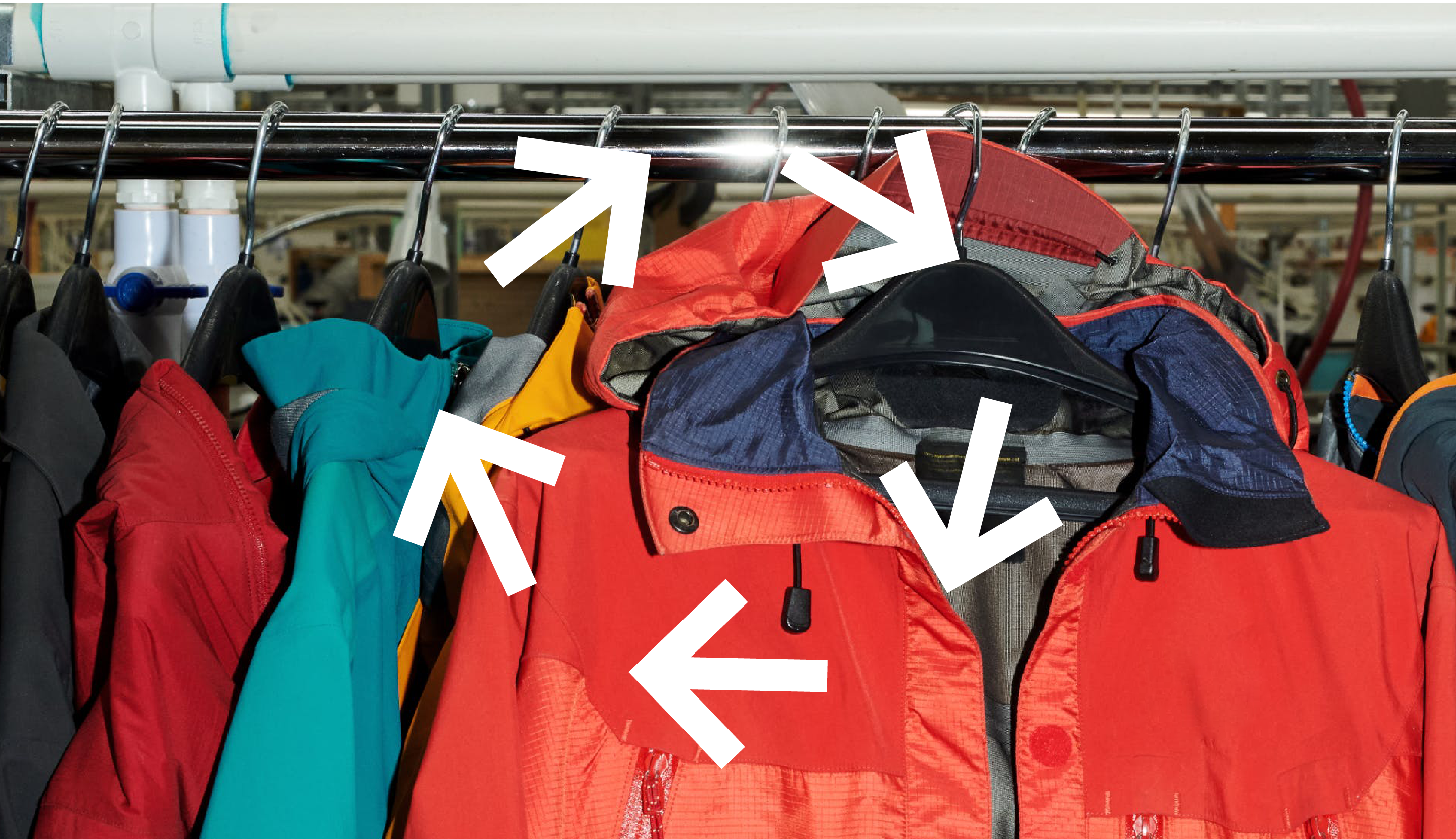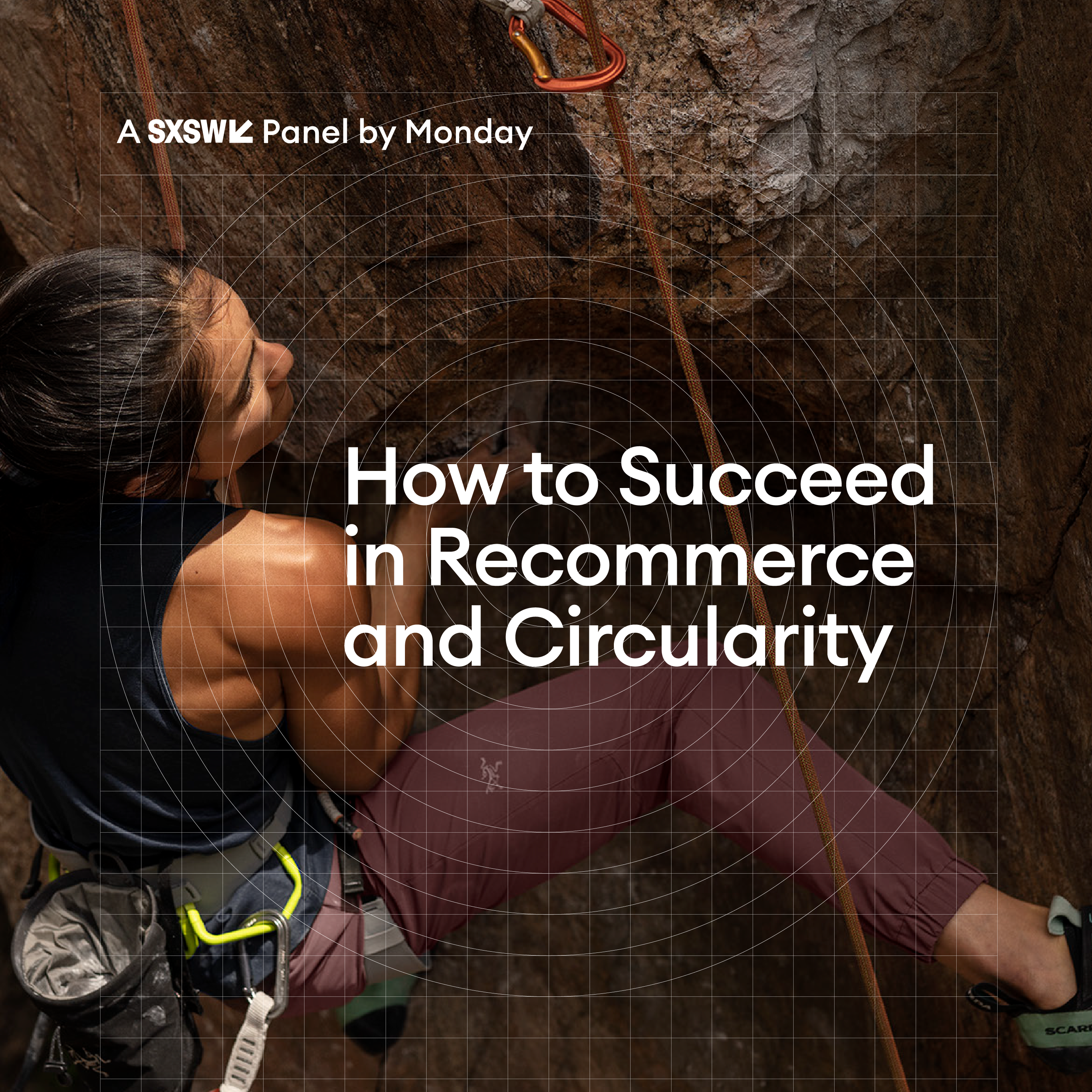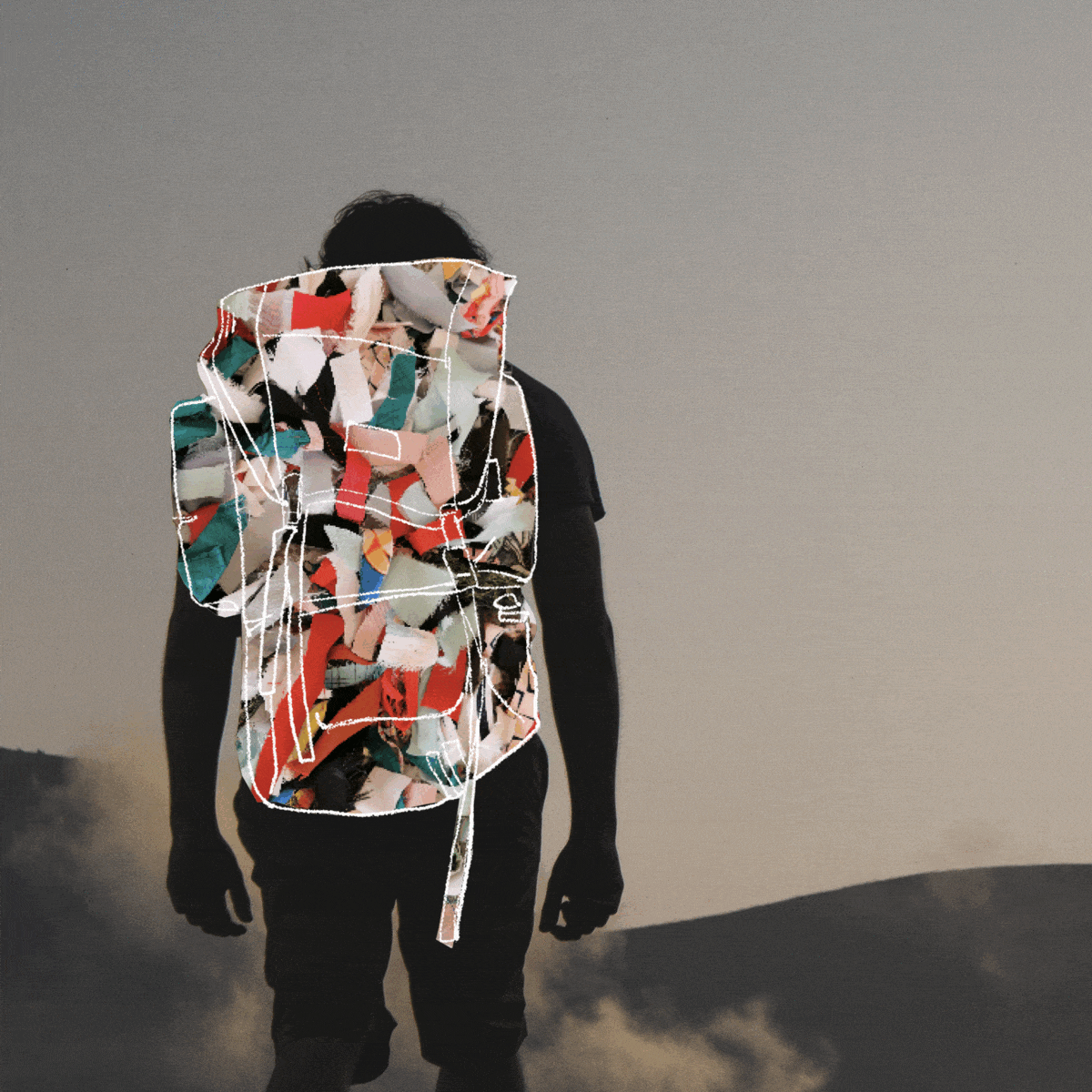There’s no doubt about it—secondhand fashion is one of the hottest styles around lately. Sales of pre-owned goods are growing even faster than traditional retail sales, with the resale market predicted to reach a value of $77 billion by 2026.
It’s no wonder we’re seeing more and more brands stepping up to meet the obvious demand. Arc’teryx has tackled things head-on with ReBird, a multipoint approach to circularity that encompasses repair, resale, and upcycling to keep its gear in play. Amour Vert launched its ReAmour marketplace as a solution to save returned items from landfills.
Whether it’s strategically designing for end-of-life, finding innovative ways to repurpose excess raw materials—á la Cotopaxi’s Repurposed Collection—or offering repair services, there’s no shortage of solutions to explore for extending the life of gear and garments. But one of the biggest ways brands can make an impact is to implement a branded resale program.
While it may sound like a daunting task, we firmly believe that recommerce is the way forward—and we want to help brands get there. We got some clutch insider knowledge from Recurate COO and Co-founder Wilson Griffin to help demystify recommerce and outline the key steps of getting your resale program up and running.
1. Define your strategy
Before embarking on the resale adventure, consider what brought you here—and where you’re going next. You’ve likely been grappling with some hard truths about textile waste and considering ways to keep existing products out of landfills, or how to generate revenue without increasing production.
“Recommerce is about giving customers what they want—variety and discovery—without the massive environmental impact of fast fashion,” Wilson tells us. “Customers are still shopping every few months, but with recommerce, those purchases don’t come with additional manufacturing impact or guilt for the customer.”
Maybe you’ve identified aspirational buyers who are impeded by price point, or you’re a young brand in your market wanting to give customers a lower-risk price to try your brands for the first time. Resale gives those buyers a foothold to participate in your brand and fosters a direct relationship instead of losing that sale to a third-party platform.
Recognizing areas of opportunity will help you map out a resale plan to address those needs. Authentic motivations for why you’re doing this will resonate with the employees who are driving your program and the consumers who are buying into it—a win for everyone involved.
2. Bring in the technology gurus
Now that you know your why, you’ll need to focus on the how. There are a number of approaches to recommerce—each of them suits particular needs and can be combined for a bespoke solution.
In a peer-to-peer model, consumers are selling to and buying from other consumers. They’re able to list items they own from their purchase history or your product catalog, set the price, and ship directly to the new owner—the seller and brand generally share the earnings, or the seller gets the full resale value from the brand in the form of store credit.
This plan of attack involves less work for your brand and offers a quicker time to market. Peer-to-peer is highly efficient, both from a cost and environmental perspective—requiring just a single leg of shipping and no warehousing or labour costs. On the flip side, quality control can be more challenging and brands get a smaller share of revenue.
The takeback format is exactly what it sounds like—brands take used inventory back from customers, who ship the items to the brand’s warehouse or a third-party warehouse run by a partner. That partner network then authenticates, cleans, and photographs the items and fulfills orders. Typically brands opt for third-parties, but some do choose to manage this process in their own warehouses if they have the resources.
This approach is more logistically demanding and expensive as it requires a trusted repair partner, but there are some cool options out there—like the waterless and dryerless cleaning tech from Tersus Solutions, for example. Taking this approach also allows you to really shape the entire brand experience.
Adopting a brand supply model means brand-owned items—like returns or sample product—are sent to the fulfillment centre, where they’re processed and listed for purchase with information that comes straight from your product catalog. You’ll need comprehensive fulfillment infrastructure or a third-party logistics provider, but this approach is a great solution for brands looking to give new life to returns, samples, or imperfect inventory.
No matter which combination of resale services you choose, potential buyers are browsing new and secondhand items all in the same shopping experience—so product cannibalization is next to non-existent.
Returns. Storage. Customer service. All those logistics might feel overwhelming, particularly for brands that are used to the familiar sales journey of new goods. Luckily, there are tools out there like Recurate and Trove that streamline the whole process of this “reverse supply chain.”
Recurate is a flexible platform in a branded environment that was created at the junction of retail and sustainability. “We could see that resale was growing and there was this huge opportunity for brands to take part in the resale industry, but the flexibility for brands and technology was missing,” Wilson reflects.
Not only will Recurate help build your recommerce website, they also partner with ecommerce experts from Shopify to Fillogic to Salesforce to carry out all those nitty gritty back-end details and enable a bespoke suite of resale services.
3. Shape the brand experience
The fact of the matter is, consumers are likely already reselling your products on existing marketplaces like eBay, Poshmark and Marketplace—where messaging and customer service are completely out of your hands.
A major upside to owning your resale channel is that it allows you to maintain control over how your brand shows up in the secondhand market. Buyers get the kind of product knowledge only your brand can offer and are immersed in the familiarity of your UX and communications—so consumer trust doesn’t suffer.
One of the biggest barriers to brands launching their recommerce program is knowing how to talk about it and differentiate it from their mainline. “We encourage all brands to name their program and to incorporate branding,” Wilson tells us. “Whether that mirrors existing branding or becomes something with its own unique look and feel, it makes customers feel like they’re your customers—no matter if they’re purchasing new or pre-loved.” Determining your go-to-market strategy before launch keeps your investment from stagnating.
The pack leaders at Patagonia have this dialled, creating an identity for their Worn Wear that nests seamlessly into their existing brand while still setting the program apart. The logo and colour palette are visually distinct yet the resale site layout echoes the main site, easing the path to purchase with a shopping experience that’s instantly familiar.
Plus we can’t help but love their cheeky (Im)Perfectly Patched collection, a Kintsugi-esque attitude toward repair that treats the patch as a badge of honour instead of a flaw.
4. Launch to new heights
If you’re going to invest in a platform, it’s worth kicking things off with a bang. Hosting a launch event is a great way to generate buzz right out of the gate, and the benefits are plentiful—it welcomes your community into the fold, serves as an educational tool for those who are less-than-familiar with recommerce, and builds a bank of pre-owned merchandise.
Recurate client Clare V hosted an in-store collection event ahead of their peer-to-peer program launch where customers brought in their secondhand merchandise and received store credit—so when the program was up and running, Clare V already had inventory.
“Merging the physical store experience with the digital showed people that they’re still buying from the brand they know and love,” Wilson recalls. “And getting the credit in their pocket right away meant they would continue to do so.”
Arc’teryx took things a step further to relaunch their Used Gear Program with Used Gear Month. For a full thirty days, guests could trade their pre-loved gear for a voucher worth 30% of the item’s original value—double the usual trade-in amount. To highlight the environmental impact of reduced consumption, they donated $10 from every trade-in item and raised a total of $25,000 for Protect Our Winters. The campaign drove 300% more trade-ins in a single month than it previously had over an entire year.
5. Keep the story going
The big debut of your resale program is an exciting milestone. But in order for recommerce to see growth and longevity, continuity is key in your marketing strategy. “There needs to be a constant drumbeat reinforcing the reasons for buyers and sellers to participate,” says Wilson.
Marketing for resale doesn’t have to mean reinventing the wheel. Quite the opposite, in fact—it means maximizing existing touchpoints like email and social where you’ve already built a following, and dedicating some of that airtime to your resale messaging. Look for the low hanging fruit to start, then test and build on it—for example, add a banner with a strong call-to-action into your e-newsletter and then create a resale-specific drip campaign.
When you work with a partner like Recurate, you own your consumer behaviour data—so put those numbers to good use to identify trends and capitalize on them. Key “holidays” that garner big online traffic can be another easy way to capture engagement.
Peak Design took advantage of Earth Day to do just that—they shut down their main website and redirected that incoming traffic to a landing page that educated visitors on their used gear PD Marketplace. Sneaky. Simple. And totally genius.
As self-professed logophiles, we have to remind you: words create worlds. Language plays a huge role in making your program accessible to consumers. We love the way our client RESPONSIBLE applies their brand voice on their Buy Back page, calling out the pain points of other platforms while simultaneously inviting consumers to participate in their own resale program—all in a few concise, quippy sentences. “Skip the fees, hidden costs and ghosting you get on Depop or eBay. Message us with what you’ve got, get a quote and get paid.“
Consider too the ways that your resale program shows up in the IRL retail environment. What training is needed for retail teams so they can speak from the heart? Are there use cases for in-store display elements like point-of-sale takeaway assets or a dedicated resale rack?
Once the ball is rolling, don’t let it stop. Continuing to measure, test, and adapt will keep things fresh and iron out wrinkles as they come.
The future of resale is bright
If you’re considering branded resale, you’re in good company. Whether driven by personal sustainability morals or the influence of pop culture, consumers are increasingly open to selling as well as buying sustainably.
“There’s a demographic we call The Circulars who are already engaging in the full loop of circular fashion, meaning they’re both selling and buying recommerce,” Wilson explains. “This is the future of fashion, so at this point the question is not if you should be participating in resale—it’s how soon can you start?”
As resale transforms the retail landscape, it’s also breaking ground on supply chain transparency. Imagine knowing the unabridged lifecycle of your clothes, from raw materials all the way through end-of-life recycling. Wilson predicts that in 3–5 years, every product will have a digital identifier that does just that—RFID tags or QR codes that consumers can scan to learn more about an item, creating a blockchain-style ledger of its purchase history.
Circular fashion isn’t going anywhere any time soon—except into more closets.







